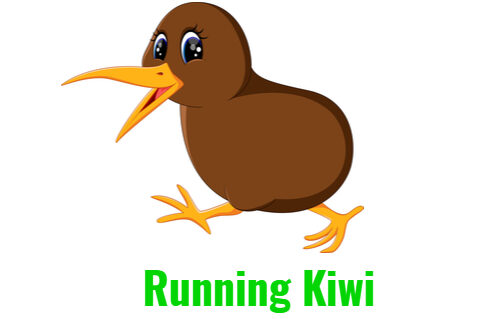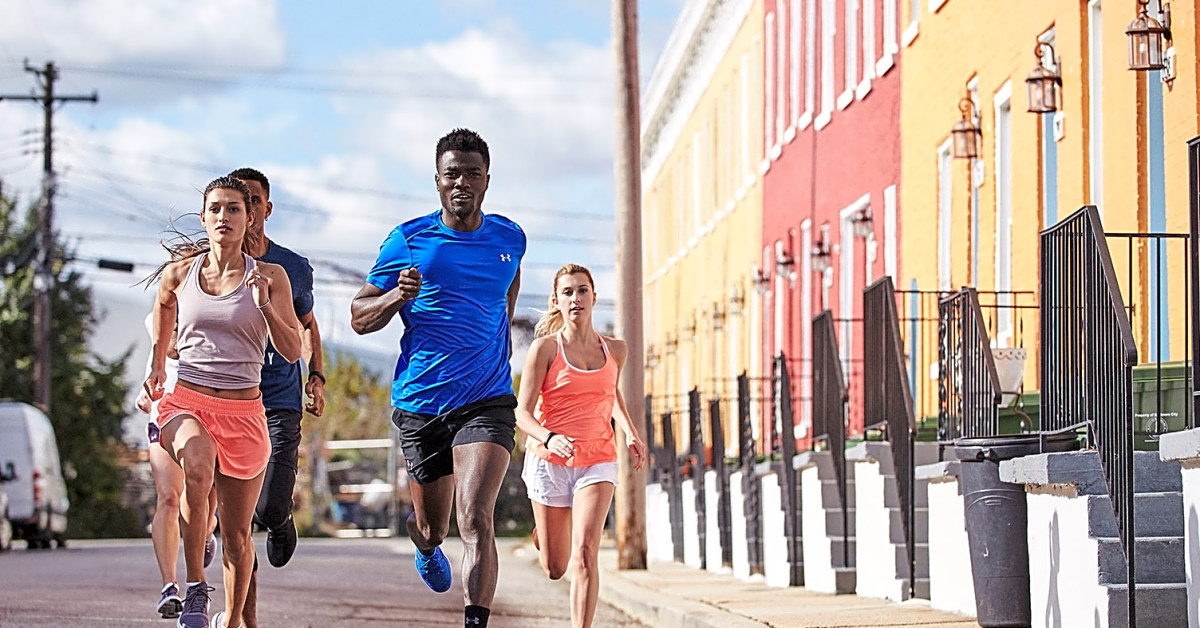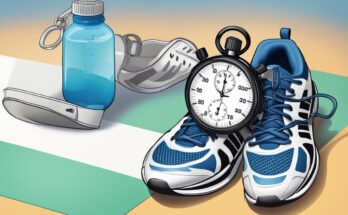Many people who are new to running may wonder how fast they should run. The answer to this question depends on a variety of factors, including the runner’s fitness level, goals, and experience. While some runners may be focused on setting personal records or competing in races, others may simply want to improve their overall health and fitness.
Regardless of one’s goals, it is important to remember that running too fast can lead to injury and burnout. In general, runners should aim to run at a comfortable pace that allows them to maintain a conversation without feeling out of breath. This pace may vary from person to person and may change over time as the runner becomes more fit and experienced. By listening to their body and gradually increasing their speed and distance, runners can find their ideal pace and enjoy the many benefits of running.
Understanding Running Pace
What is Running Pace?
Running pace is the speed at which a person runs. It is usually measured in minutes per mile or kilometers per hour. A runner’s pace can vary depending on factors such as terrain, weather, and fitness level.
Why is Running Pace Important?
Running pace is an important metric for runners because it can help them achieve their goals. Whether a runner is training for a race or simply trying to improve their fitness, understanding their pace can help them track their progress and adjust their training accordingly.
How to Calculate Running Pace
There are several ways to calculate running pace. One common method is to use a pace calculator, which can be found online or as a mobile app. To use a pace calculator, a runner simply inputs their distance and time, and the calculator will provide their pace per mile or kilometer.
Another way to calculate running pace is to use a stopwatch or a running watch. To do this, a runner should time themselves over a known distance, such as a mile or a kilometer. They can then divide their time by the distance to calculate their pace per mile or kilometer.
In summary, understanding running pace is important for runners who want to track their progress and achieve their goals. There are several ways to calculate running pace, including using a pace calculator or a stopwatch.
Factors Affecting Running Pace
Age and Sex
Age and sex are two of the most significant factors affecting running pace. As people age, their bodies experience a decline in muscle mass and strength, which can lead to a decrease in running speed. Moreover, women tend to have a slower pace than men due to differences in body composition and hormonal factors.
Fitness Level
Fitness level plays a crucial role in determining running pace. People who are more physically fit tend to run faster than those who are not. Regular exercise and training can improve cardiovascular fitness, muscular endurance, and strength, which can all contribute to faster running speeds.
Terrain
Terrain is another critical factor that affects running pace. Running on flat, smooth surfaces is generally faster than running on hilly or uneven terrain. Uphill running requires more effort and can slow down the pace, while downhill running can increase the speed but also increases the risk of injury.
Running Shoes
The type of running shoes a person wears can also impact their running pace. Running shoes with proper support and cushioning can help reduce the risk of injury and improve comfort, which can lead to faster running times. Lightweight shoes designed for racing can also improve speed, but they may not provide enough support for everyday training.
Genetics
Genetics can also play a role in determining running pace. Some people are naturally faster runners due to genetic factors such as muscle fiber type, body type, and lung capacity. However, genetics alone cannot determine running ability, and training and practice are still essential for improving running speed and endurance.
In conclusion, several factors can affect running pace, including age, sex, fitness level, terrain, running shoes, and genetics. By understanding these factors, runners can make adjustments to their training and equipment to improve their speed and performance.
Training for Running Pace
When it comes to running, pace is an essential factor that can make or break a runner’s performance. Whether you’re a beginner or an experienced runner, improving your running pace can help you achieve your goals and set new personal records. Here are some training methods that can help you improve your running pace:
Training Plans
One of the most effective ways to improve your running pace is to follow a structured training plan. A training plan can help you build endurance, increase speed, and prevent injuries. There are many training plans available online that cater to different levels of fitness and running experience. Some popular training plans include the Couch to 5K program, Hal Higdon’s training plans, and Jeff Galloway’s Run-Walk-Run method.
Interval Training
Interval training involves alternating between periods of high-intensity running and periods of rest or low-intensity running. This type of training can help you improve your running pace by increasing your cardiovascular fitness and endurance. Some examples of interval training include hill repeats, fartlek training, and tempo runs.
Strength Training
Strength training can help you improve your running pace by increasing your overall strength and power. Stronger muscles can help you maintain proper form and reduce the risk of injuries. Some examples of strength training exercises for runners include squats, lunges, deadlifts, and calf raises.
Cross-Training
Cross-training involves participating in other forms of exercise besides running. This can help you improve your overall fitness and prevent injuries by targeting different muscle groups and reducing the impact on your joints. Some examples of cross-training activities include swimming, cycling, yoga, and Pilates.
Incorporating these training methods into your running routine can help you improve your running pace and achieve your goals. However, it’s important to remember that improving your running pace takes time and consistency. Be patient, listen to your body, and enjoy the process of becoming a faster and stronger runner.
Running Workouts for Improving Pace
Improving running pace requires a combination of endurance, strength, and speed. While there is no one-size-fits-all approach to running workouts, incorporating a variety of training methods can help runners achieve their pace goals.
Easy Runs
Easy runs are essential for building endurance and increasing mileage without overexerting the body. These runs should be at a comfortable pace, where the runner can maintain a conversation without feeling out of breath. The goal of easy runs is to develop the aerobic system, which helps the body efficiently use oxygen during exercise.
Tempo Runs
Tempo runs are a great way to improve lactate threshold, which is the point at which the body starts producing more lactic acid than it can clear. These runs involve running at a comfortably hard pace for an extended period, usually 20-30 minutes. The pace should be challenging but sustainable, where the runner can still speak in short sentences.
Speed Runs
Speed runs are designed to improve running economy and neuromuscular coordination. These runs involve short, fast intervals with rest periods in between. The goal is to run at near maximum effort, which helps the body adapt to running at higher speeds. Speed runs can be done on a track, road, or treadmill.
Hill Training
Hill training is an effective way to build leg strength and improve running form. Running uphill requires more effort and engages different muscles than flat terrain. Hill repeats involve running up a hill at a hard effort and jogging or walking down for recovery. Gradually increasing the number of repeats and the incline can help runners build endurance and power.
Incorporating a variety of running workouts into a training plan can help runners improve their pace and reach their goals. It is important to listen to the body and adjust the intensity and duration of workouts as needed.
Injury Prevention and Recovery
Injury Prevention
When it comes to running, injury prevention is crucial. To avoid injuries, runners should ensure that they have the right equipment, including shoes that fit properly and provide adequate support. Additionally, runners should warm up before each run to get their muscles ready for the workout ahead. It’s also important to vary workouts to avoid overuse injuries.
Rest and Recovery
Rest and recovery are equally important for runners. Rest days give the body time to recover and repair itself, which can help prevent injuries. Runners should aim to take at least one rest day per week, and more if they feel fatigued or sore. During rest days, runners can engage in low-impact activities like walking or yoga to help keep their bodies active without putting too much stress on their joints.
In addition to rest days, runners should also prioritize recovery after each workout. This includes stretching after each run to help prevent muscle tightness, and foam rolling to help release any knots or tension in the muscles. Runners should also aim to get enough sleep each night, as sleep is crucial for muscle recovery.
Overall, injury prevention and recovery should be a top priority for runners. By taking the necessary steps to prevent injuries and prioritize rest and recovery, runners can stay injury-free and continue to improve their running performance.
Other Factors to Consider
When it comes to running, there are several other factors to consider beyond just the speed of your fast run. These factors can impact your performance and overall health, so it’s important to keep them in mind.
Warm-Up and Stretching
Before any run, it’s important to properly warm up and stretch. This can help prevent injury and improve performance. A good warm-up should include some light jogging or walking, followed by dynamic stretches that target the muscles you’ll be using during your run.
Nutrition and Sleep
What you eat and how much sleep you get can also impact your running performance. Eating a balanced diet with plenty of carbohydrates, protein, and healthy fats can provide the fuel your body needs to perform at its best. Similarly, getting enough sleep can help your body recover and prepare for your next run.
Rules of the Road
When running outdoors, it’s important to follow the rules of the road. This means running against traffic, using sidewalks when available, and obeying traffic signals. It’s also important to be aware of your surroundings and stay alert for any potential hazards.
Well-Lit and Safe Running Areas
Running in well-lit and safe areas can help reduce the risk of injury and improve your overall running experience. Look for well-lit paths or trails, and avoid running in areas with heavy traffic or other potential hazards.
Overall, there are several factors to consider when it comes to running beyond just the speed of your fast run. By taking these factors into account, you can help improve your performance and stay safe while running.
Race-Specific Running Pace
When it comes to running a race, it’s important to have a good understanding of the pace you should be running at. This can vary depending on the distance of the race, as well as the individual’s fitness level and experience. In this section, we will explore the race-specific running pace for different types of races.
5K and 10K Races
For a 5K or 10K race, the pace can vary greatly depending on the individual’s fitness level and experience. Generally, a good rule of thumb is to aim for a pace that is slightly faster than your average training pace. This will help you to push yourself during the race, while still allowing you to maintain a steady pace throughout.
For a beginner runner, a good goal for a 5K race would be to finish in around 30-40 minutes, while a more experienced runner may aim for a finish time of under 25 minutes. For a 10K race, a beginner may aim for a finish time of around 1 hour, while a more experienced runner may aim for a finish time of under 45 minutes.
Half-Marathon
When it comes to a half-marathon, the pace should be slightly slower than that of a 5K or 10K race. This is because the distance is longer, and it’s important to conserve energy throughout the race. A good goal for a beginner runner would be to finish a half-marathon in around 2 hours, while a more experienced runner may aim for a finish time of under 1 hour and 30 minutes.
Marathon
For a marathon, the pace should be even slower than that of a half-marathon. This is because the distance is much longer, and it’s important to conserve energy throughout the entire race. A good goal for a beginner runner would be to finish a marathon in around 5 hours, while a more experienced runner may aim for a finish time of under 3 hours.
It’s important to note that these are just general guidelines, and the pace can vary greatly depending on the individual’s fitness level and experience. It’s always a good idea to consult with a coach or trainer to develop a more personalized training plan.
Conclusion
In conclusion, determining the appropriate running pace for an individual depends on several factors such as age, fitness level, and running goals. It is important to note that running too fast or too slow can lead to injuries or hinder progress. Therefore, finding the right balance is key.
One way to determine the appropriate running pace is by using a heart rate monitor. This device can help individuals stay within their target heart rate zone and ensure they are not overexerting themselves. Another way is to use the talk test, where an individual should be able to hold a conversation while running without feeling out of breath.
It is also important to gradually increase running pace and distance to avoid injury and allow the body to adapt. Incorporating strength training and cross-training can also improve overall fitness and running performance.
Overall, finding the right running pace is a personal journey that requires patience, consistency, and listening to one’s body. By following these guidelines and seeking guidance from a professional, individuals can achieve their running goals while minimizing the risk of injury.




